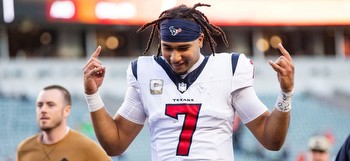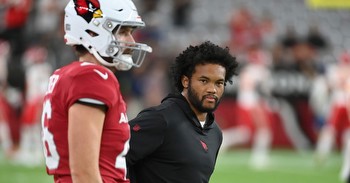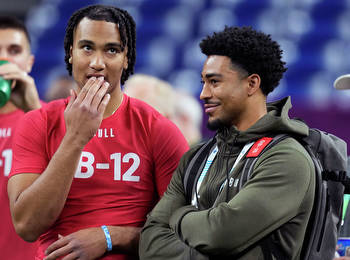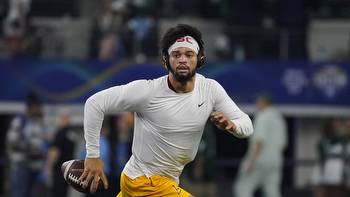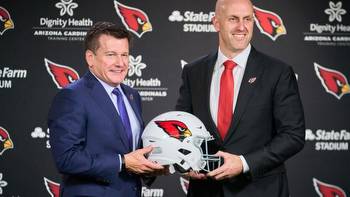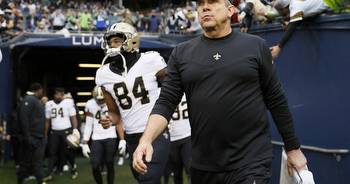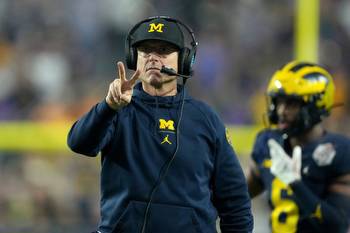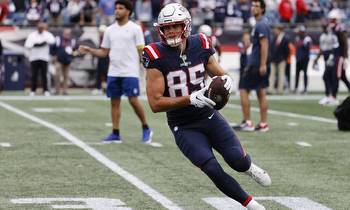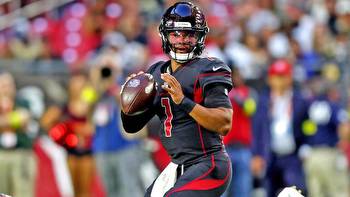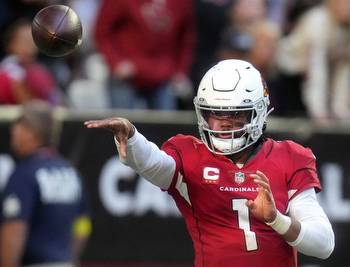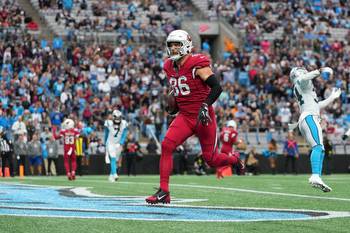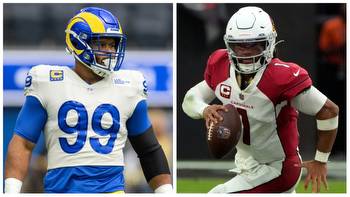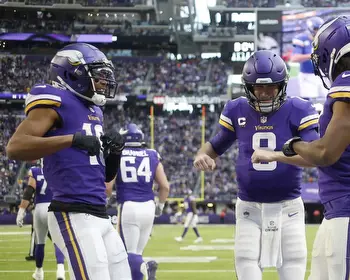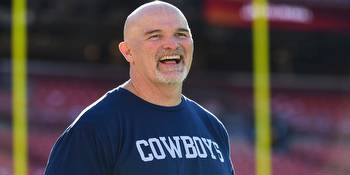The Arizona Cardinals Are in a Hole
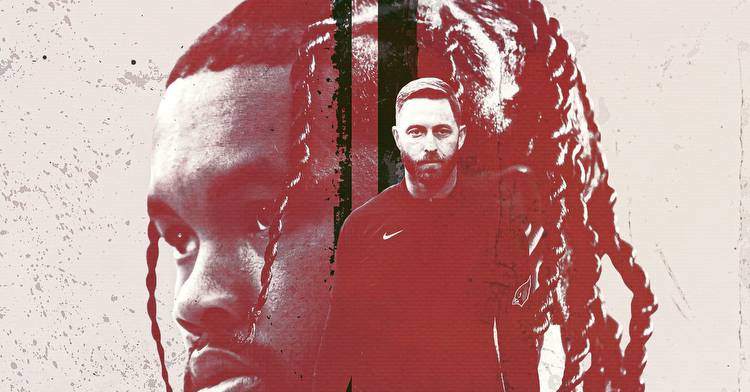
In Week 7 of the 2021 season, the Arizona Cardinals hosted the Houston Texans. They trounced them—as most teams facing the Texans these days do. This win propelled the Cardinals to 7-0, making them the final undefeated team of the 2021 season. Quarterback Kyler Murray was first among NFL players in MVP odds.
Since that game, the Cardinals are 8-15—8-16, if you include their wild-card loss to the eventual Super Bowl champions, the Los Angeles Rams. In home games since that Texans win, the Cardinals are an astounding 1-12.
I don’t bring up this sudden change because it’s surprising. What’s surprising isn’t that the Cardinals have suddenly become pretty bad—it’s that the Cardinals were winning a lot of football games not too long ago.
The Cardinals’ success in the win-loss column always felt flimsy—entering Week 7, when they were still undefeated, the Cardinals had only the sixth-best Super Bowl odds—but that did not stop owner Michael Bidwill from committing to the nucleus that brought Arizona to its first playoffs in six years. This offseason, Arizona extended both general manager Steve Keim and head coach Kliff Kingsbury through the 2027 season—extensions that were soon followed by a fraught but eventually successful negotiation with star quarterback Kyler Murray, who was made the second-highest-paid quarterback in mid-July.
Subsequently, the Cardinals did what teams usually do when they have a star quarterback and have tasted the playoffs—they go all in, desperately trying to build a contending team while their quarterback is still young and still a star. Because they’re bad at football and don’t have many good players, it may not feel like the Cardinals went all in. But they did. By pure roster age, the Cardinals have the second-oldest roster in football behind only the Tampa Bay Buccaneers, a recent Super Bowl champion whose 45-year-old quarterback swings the numbers substantially. By snap-weighted age—measuring roster age by who actually takes snaps and how many they take—the Cardinals are fifth, behind the Saints, Broncos, Buccaneers, and Rams. By draft capital, only four teams have less future capital than the Cardinals.
Let’s talk about the wide receivers. Since Kingsbury took over the offense, here are all of the (significant) moves the Cardinals have made at the position:
- Drafted Andy Isabella (2019 second-round pick)
- Drafted Hakeem Butler (2019 fourth-round pick)
- Traded for DeAndre Hopkins (sending a 2020 second-round pick, 2021 fourth-round pick, and RB David Johnson to the Texans)
- Signed A.J. Green in 2021 free agency (one year, $8.5 million)
- Drafted Rondale Moore (2021 second-round pick)
- Traded for Marquise Brown and a 2022 third-rounder (sending a 2022 first-round pick to the Ravens)
- Traded for Robbie Anderson (sending a 2024 sixth-round pick and 2025 seventh-round pick to the Panthers)
Besides the Hopkins trade, which of these moves—if any—can be considered successful? Butler and Isabella are both off the team, having been outplayed by 2019 sixth-round receiver KeeSean Johnson, who is … also off the team. Perhaps Green’s 54-catch, 848-yard, three-touchdown season can be considered a victory given how little he cost last year. Moore is rarely used beyond the line of scrimmage. Brown’s 17-game pace of 113 catches, 1,200 yards, and six touchdowns feels like a success—until you realize that he’s still 74th in the league in yards per route run.
That Kingsbury has missed on receivers is a secondary point. The primary point is the capital the team has spent on receivers altogether. An Air Raid coach who built successful offenses at the college level by spreading the field out and running routes to space, Kingsbury was hired exclusively on the premise that he could create an explosive passing attack in the NFL. He was not hired for his winning record as a college head coach—he was 35-40 as the head coach of Texas Tech before he was fired in 2018. He was not hired as a culture setter or team rebuilder—he inherited a winning team. He was not hired for his relationships—he had never coached Kyler Murray, had limited existing relationships with NFL coaches, and did not already have a relationship with general manager Steve Keim. He was hired to bring his Air Raid passing attack to the NFL.
But if Kingsbury’s Air Raid offense works only if he spends all those resources—four picks in three years on rookie receivers, a net three draft picks in trades for two veterans, and a free agent contract to another veteran—then what’s the point? Every single passing attack in the NFL should work with that level of investment. On top of all that, the Cardinals have a former first overall pick at quarterback whom they just signed to a massive deal. With that level of investment, the passing offense simply must work.
It’s not working. Not even a little bit. Since 2019, Kingsbury’s passing offense has ranked 22nd, 14th, and ninth by DVOA—this year, it’s down to 28th.
This is as unacceptable as it is confounding. The mitigating factors—Hopkins’s suspension, Moore’s early-season injury, and Brown’s and Murray’s midseason injuries—are not nearly enough to excuse the underachievement. If Kingsbury is not bringing a successful passing attack to the Cardinals, what is he bringing?
Nothing. And the Cardinals are bleeding because of it. The Cardinals also traded for Zach Ertz last season, signed him to an extension this year, and still drafted a second-round tight end in Trey McBride, who started the season as a healthy scratch and has logged 12 catches so far. Two of the Cardinals’ five starting offensive linemen are signed beyond this season, and one of the two, Rodney Hudson, considered retiring this offseason. Chase Edmonds, who totaled 900 yards from scrimmage last season as a change-of-pace back to James Conner, left in free agency to be replaced by former seventh-round pick Eno Benjamin, who was then cut by the team and replaced by sixth-round rookie Keaontay Ingram.
Yet somehow, in a frantic justification for this mismanaged roster, cap space has been deployed liberally. With Budda Baker carrying the third-highest cap hit among safeties this season, running mate Jalen Thompson was signed to a three-year, $40 million deal, locking up the safety duo at the core of Football Outsiders’ 24th-ranked passing defense by DVOA. Offensive tackle D.J. Humphries was given a three-year, $66.8 million extension as Murray’s blindside protector, making him the seventh-highest-paid left tackle in the NFL by average annual value. That’s a pretty penny for the average play Humphries has offered during his tenure with the Cardinals.
Those are the significant contracts the Cardinals have recently signed: Humphries at tackle, Thompson at safety, Green at receiver, and J.J. Watt along the defensive line. Measure those players up against those homegrown talents who have departed in free agency. Christian Kirk took his megadeal with the Jaguars, leaving Arizona as the team’s most productive receiver during the Kingsbury era. Haason Reddick parlayed a strong contract year into a hefty prove-it deal with the Panthers and then a big free agent contract with the Eagles. Chandler Jones’s holdout finally led to a split, and Jones landed with the Raiders. Veteran LBs De’Vondre Campbell and Jordan Hicks were ousted by draft picks in Isaiah Simmons and Zaven Collins—Campbell delivered an All-Pro season to the Packers in his first year out of Arizona, and Hicks is playing well in Minnesota in his first year away from the Cardinals.
Which group of players would you rather have? The free agents the Cardinals signed or the ones who now play elsewhere?
Keim’s work on the roster simply does not line up with the duration of his position as the general manager of the Cardinals. He has been the general manager in Arizona since 2013. He has been in his position longer than all but four true general managers—Les Snead, Howie Roseman, John Schneider, and Mickey Loomis. (Bill Belichick, Jerry Jones, and Mike Brown, who are all de facto general managers, have also been in their positions longer.) All of those executives have won Super Bowls during their tenure; Keim’s Cardinals have made it to one conference championship game, which they lost. Since Keim took over in 2013, the Cardinals have won 51 percent of their games, just above league average—every single team below them on the list has changed general managers at least once. Since 2019, when Kingsbury took over, the Cardinals have won 46 percent of their games.
This past week, Keim stepped down from his position as the Cardinals’ general manager for a health-related leave of absence. General manager duties are now filled by members of Keim’s staff—vice presidents of player personnel Quentin Harris and Adrian Wilson.
It is unclear what this means for Keim’s future with the team. Texans general manager Rick Smith took a leave of absence to care for his wife in December 2017, and within two weeks the Texans hired Brian Gaine to take over the position. Keim’s situation is murkier—we don’t know precisely what health-related issue has motivated him to step down—and accordingly, we don’t know what the Cardinals will do. As Ian Rapoport said on NFL Network on Thursday: “The future is certainly in doubt there.”
We also don’t know what the Cardinals will have at quarterback long term. Early against the Patriots, Murray went down on a scary noncontact injury that was later diagnosed as an ACL tear. As with all late-season ACL tears, Murray’s availability for the start of the 2023 season is now in doubt. Mobility is the cornerstone trait in Murray’s game, and a major knee injury puts that aspect of his performance in jeopardy.
The Cardinals were already nowhere. Into the 2022 season, they brought an expensive veteran roster with a talented second-contract quarterback, a tenured head coach, and an even more tenured general manager—all the makings of a contender—and never contended. Not even for one second. This was a masquerade—a naive belief that looking like a serious team and spending like a serious team would make the Cardinals a serious team. The Cardinals tried to fake it until they made it. And in a hypercompetitive league, they were quickly exposed.
That would be a sad end to a sad story under regular circumstances. The Cardinals could have easily and reasonably ended the season by moving on from Keim and Kingsbury. The allure of Murray and their other talented pieces could have drawn in a quality head-coaching candidate; a young, patient general manager could have steered their rebuild by taking a year off to let the cap reset and let the precious young talent in the building develop.
But the circumstances have rapidly become irregular. The draw of Murray now lacks some luster, clouded by the uncertainty of his injury and recovery. The position of general manager may or may not be open. And of course, Kingsbury still remains the head coach—and while firing him would be a reasonable decision for Bidwill, Bidwill has not made a reasonable decision in quite some time.
The Cardinals are not a good football team. They are not built for long-term success. But that’s true of a few teams. The Texans and Panthers remain cellar dwellers without much promise. Big mistakes at quarterback have left the Broncos and Colts powerless. But at least those teams have clear paths to where they want to go—someone’s been down this hole before, and they know the way out. The road map out of the big hole in Glendale is not a clear one. I don’t know what’s next for the Cardinals, and I’m not sure they do, either.
A previous version of this piece said that Kliff Kingsbury became the Texas Tech head coach after Mike Leach. Tommy Tuberville held the job after Leach and before Kingsbury.

